Hi River Roaders,
A change of pace this week, focusing on some non-native invasive plants on our grounds (and throughout the DC area) that are clearly visible right now. The next several weeks are the best time to identify and remove these plants, as most remain green longer than our native vegetation, allowing a gardener to quickly find, identify, and remove them.
Why remove non-native, invasive plants? They did not co-evolve with the insects, plants, and animals in this area, and they spread aggressively without providing any benefit to the ecosystem. These invasives displace and can damage our native plants. Removing them is fun! The cutting and pulling is a great workout and there is great satisfaction when you’ve cleared an area. Hopefully this post will motivate you to remove the invasives on grounds around you home. I recommend you download the excellent publication by the National Park Service called “Plant Invaders of Mid-Atlantic Natural Areas”, which is the ultimate reference for our area. Here is a rogues gallery, starting with those that are the worst problem on our grounds.
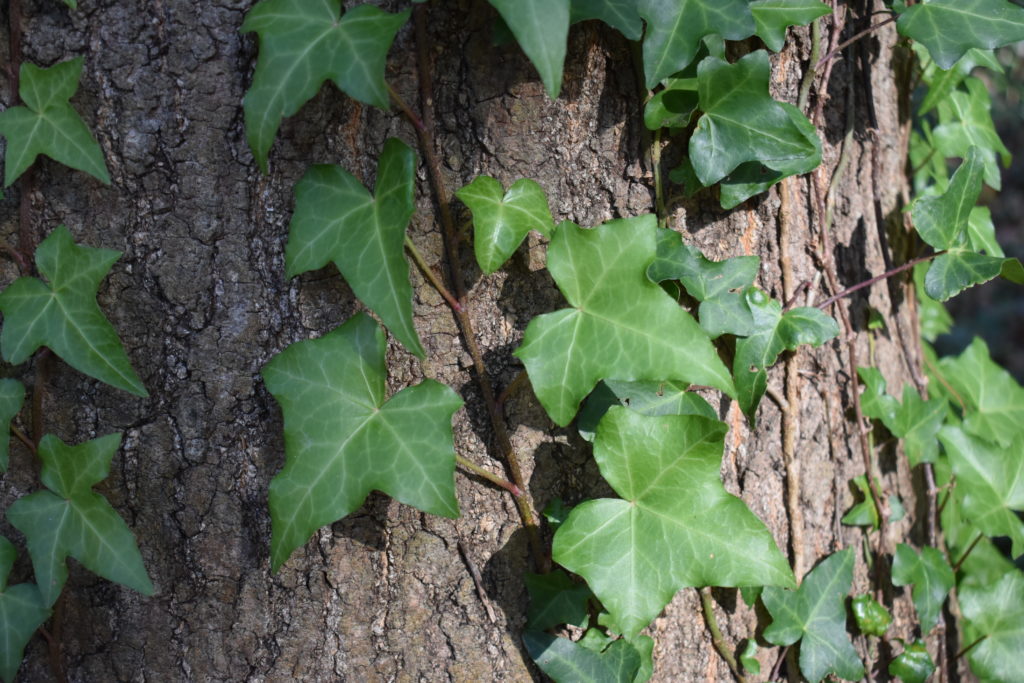
English Ivy (Hedera helix) covers large areas all around the building. The weight of mature vines damages trees and it displaces native vegetation on the ground.
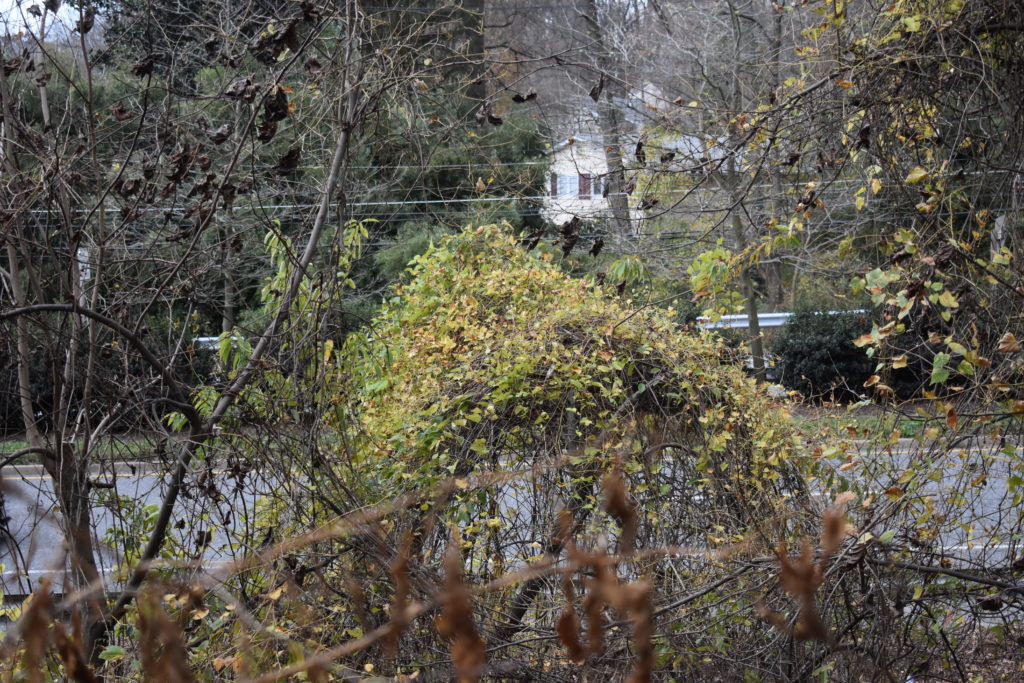
Porcelainberry (Ampelopsis brevipedunculata) growing along River Road. This is a huge problem all around Bethesda. It smothers trees and shrubs. The steep slope along River Road prevents us from controlling this.
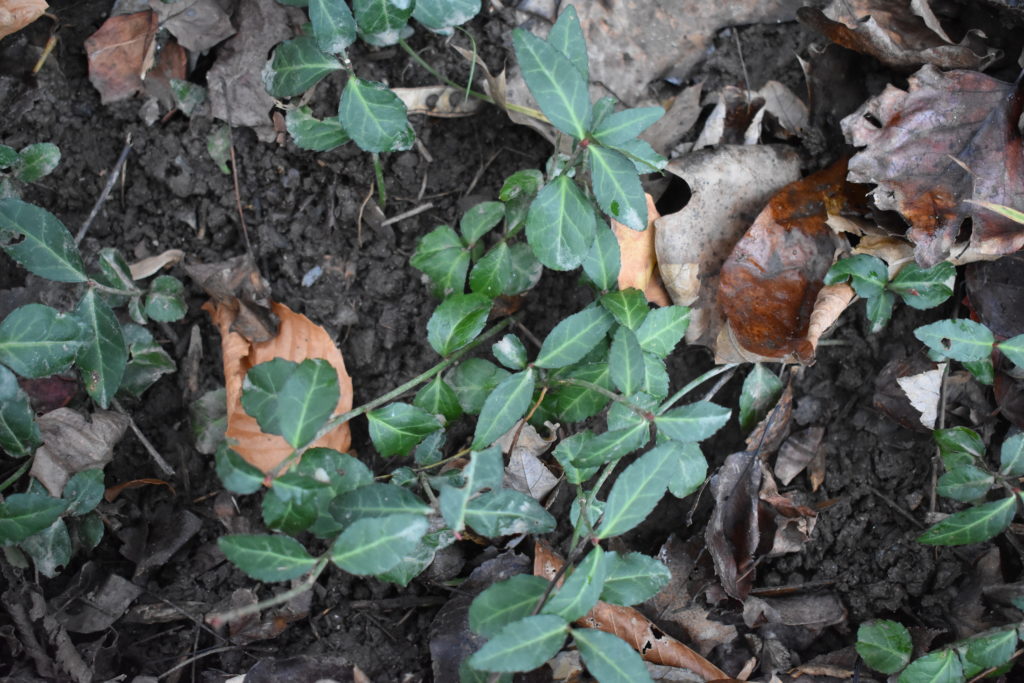
Wintercreeper (Euonymus fortunei) is primarily a problem in our wetter areas in the front and back. It is impacting our ability to establish a native plant garden in the floodplain between the two springs.
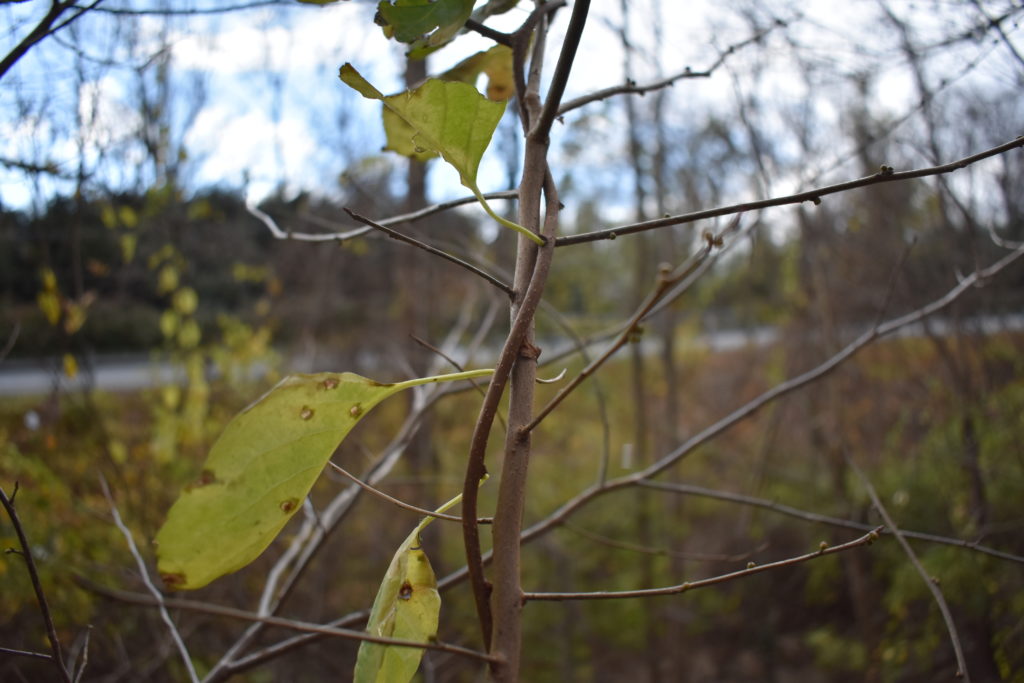
Oriental Bittersweet (Celastrus orbiculatus) has been largely controlled, but yearly management is still needed. It wraps around trees and shrubs, strangling them as they grow.
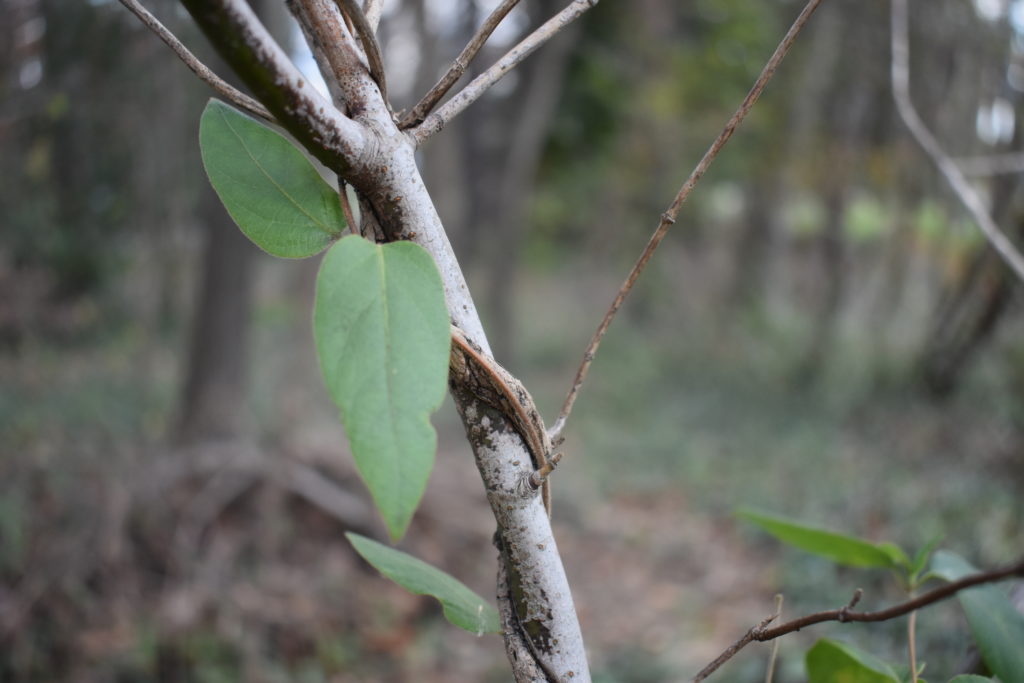
Japanese Honeysuckle (Lonicera japonica) near River Road. While it is famous for its fragrance, it also strangles trees and shrubs and out-competes native plants.
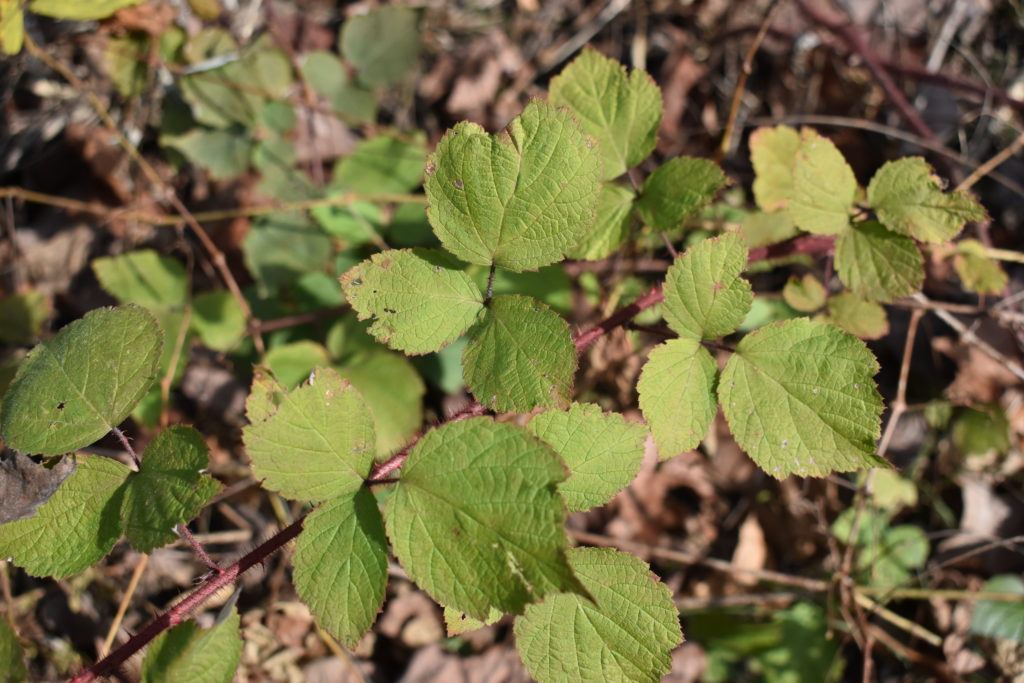
Wineberry (Rubus phoenicolasius) along River Road. While it has tasty berries that are loved by birds and people, it spreads aggressively and displaces native vegetation.
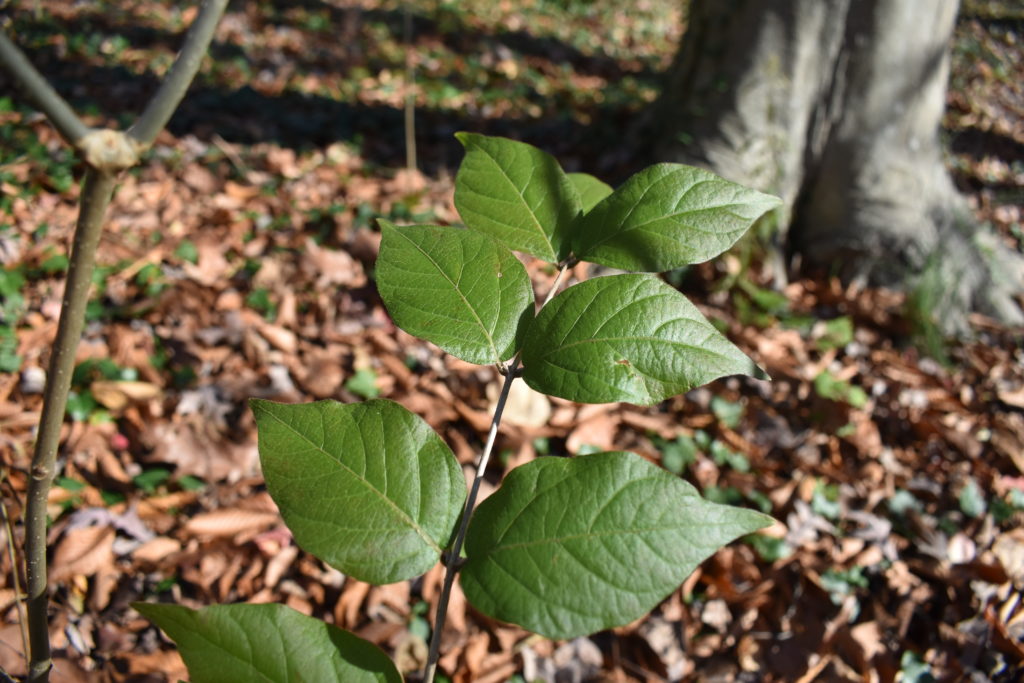
Amur Honeysuckle (Lonicera maackii), also generally known as Bush Honeysuckle. Over the last two years, we removed many of these large shrubs, some over twenty feet tall. It leafs out early, displacing our native plants, and the red berries do not have the same energy level as native shrubs.
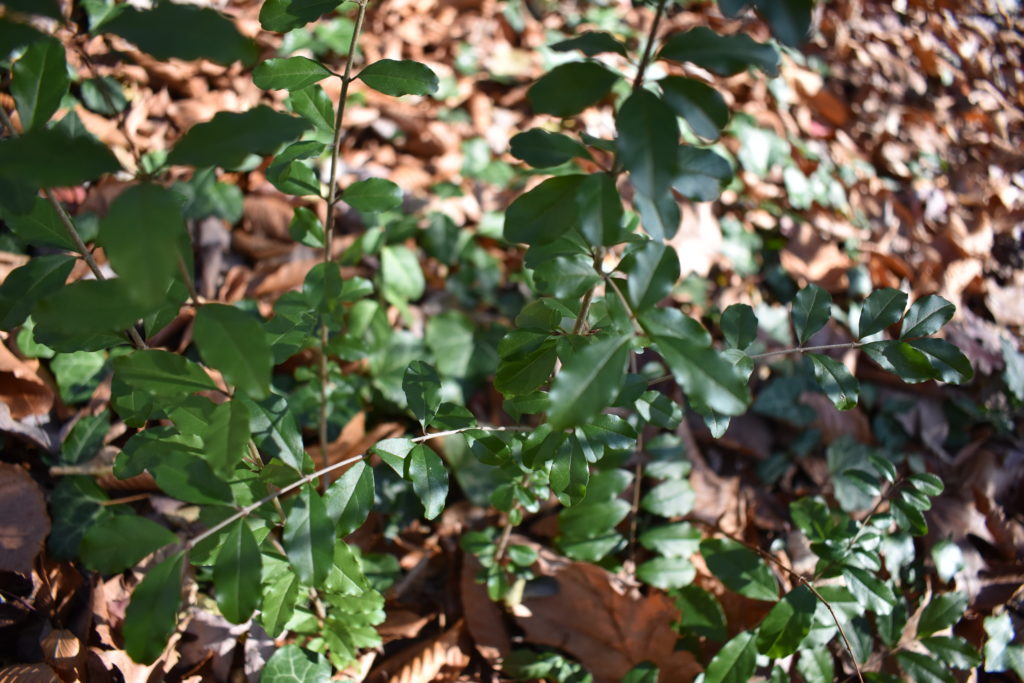
Privet (Ligustrum sp.). Chemicals in the leaves prevent native leaf-eating insects from using the plant.
That’s all for this week. Please reach out if you would like to learn more about invasive plant control. Mentoring is the best way to learn about plant identification and control methods.
Joe
